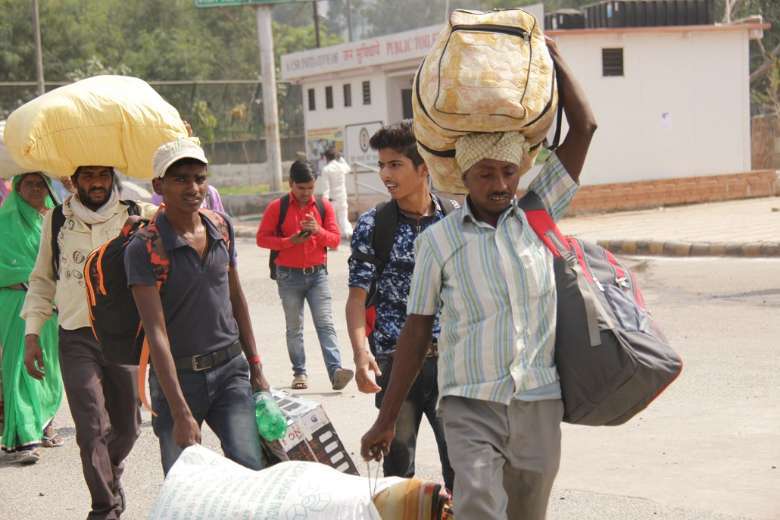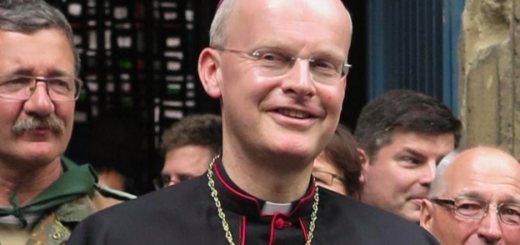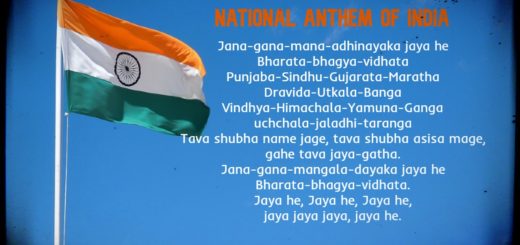Grim Life of Tribal Migrant Workers – Indian Bishops’ study reveals this

Cover image: Migrant workers in Delhi head back to their home villages during the annual Chhat Puja (Worship of Sun God) in November 2019. The pandemic has exposed the vulnerability of tribal migrants, according a study by Indian Catholic bishops. (Photo: Bijay Kumar Minj/UCA News)
UCANEWS
Union of Catholic Asia News
Church recommends a multi-pronged strategy to assist poor, vulnerable migrant workers to overcome their miserable conditions.

Migration is the geographic movement of people across a specified boundary for the purpose of establishing a new permanent or semi-permanent residence. Along with fertility and mortality, migration is a component of the population change. The term “in migration” and “out migration” are used for movement between areas within a country (internal migration). The parallel terms “immigration” and “emigration” are used to refer to moves between countries (international migration).
The Ucanews report below only gives few details of the findings of the survey by a joint venture by the Conference of Catholic Bishops’ of India (CCBI) Commission for Migrants and Workers India Federation, was released earlier this month. The sample size of the respondents is very low – only 45 migrant workers. The survey does highlight "the push and pull factors and the socio-economic compulsions of the migrants." Also the report does not highlight the recommendations made for "multi-pronged strategy from the government and non-government agencies to assist poor, vulnerable migrant workers effectively to overcome their miserable conditions".
Also it is a mystery why only tribal workers were considered in the survey as Migrant Workers are not limited to tribals per se. It is, especially the provision of PF and ESI and the safety of women workers, is an all-India problem. The survey quotes a rather backdated source Economic Survey of India 2016-17 for the number of Migrant Workers.
Incidentally, as per Pope Francis' instruction, the Indian Catholic Church has set up a new Commission for Migrant Workers/Population. It is still at a nascent stage. It is hoped this Commission will not be a paper tiger as most other Commissions in various dioceses. Isaac Gomes, Associate Editor, Church Citizens' Voice.
A new study sponsored by Catholic Bishops in India has revealed the grim reality for most tribal migrant workers in the capital New Delhi where they suffer from endemic poverty and low wages amid an absence of workplace safety and socio-economic security.
The study, ‘Tribal Migrants in Delhi City: A Pre Covid and Post Covid Analysis,’ a joint venture by the Conference of Catholic Bishops’ of India (CCBI) Commission for Migrants and Workers India Federation, was released earlier this month.
Led by noted researcher Lata Jayaraj, the survey covers the migrants who belong to the tribal communities from neighbouring states to Delhi. It analyzes the push and pull factors and the socio-economic compulsions of the migrants in pre-Covid and post-Covid situations.
“The study was an attempt to look into various factors behind migration, the various problems these tribal migrant workers face, and to analyze support system government agencies and NGOs have for them,” said Father Jaison Vadassery, secretary of the CCBI’s Commission for Migrants.
The priest noted that the study recommends a multi-pronged strategy from the government and non-government agencies to assist poor, vulnerable migrant workers effectively to overcome their miserable conditions.
The study used an in-depth analysis covering tribal migrant workers in the construction sector of Delhi. It reached out to 45 respondents, male and female, as samples who provided necessary information through case studies, focus group discussions and participant observations.
About 91 percent of tribal migrant workers in the construction sector are below 50 years, while only 8.8 percent are above 50. The sector is largely male-dominant, men accounting for 93.3 percent. The majority of them are Hindus.
Some 51 percent of workers migrated from Rajasthan, 16 percent from West Bengal, and 9 percent each from Assam, Jharkhand and Madhya Pradesh.
The study found a direct link between their low level of education, poverty, migration and low-paid employment.
The majority, about 50 percent respondents were illiterate and 28.8 percent were semi-literate as they studied up to grade five, while 17.7 percent studied above grade five.
The construction sector of New Delhi, the national capital, attracted them as it has plenty of commercial and residential buildings as well as ongoing infrastructure development projects.
About 44 percent of workers cited poor education as the reason behind joining the construction sector, 36 percent cited poverty and 29 percent pointed to other reasons.
Some 76 percent of respondents have permanent work and the rest are temporary workers. Most of them are employed as unskilled workers and they have no specific payment systems and are paid on a daily, weekly, fortnightly, or monthly basis.
On average, the workers get 279 rupees (US$3.80) per day, which is lower than the government minimum daily wage of 368-407 rupees ($5-5.60). Only 20 percent have regular payments and most face withholding of payments regularly.
All the respondents said they live in low-cost rented houses. Though the majority have houses in their villages, they are mostly in dilapidated conditions and some reported their houses are huts. About 37 percent do not own a house.
No respondent said they had prior training before joining work and none have a job contract, medical or social benefits from employers. At the workplace, they don’t get any safety equipment from employers such as helmets. About 64 percent of workers can make minimal savings from their income and 36 percent have no savings at all.
The Covid-19 pandemic has affected most of the migrant workers as they lost their livelihood and face extreme hardships as the government of Prime Minister Narendra Modi announced a nationwide lockdown on March 24 last year to stem the spread of the coronavirus without prior notice.
Millions of jobless migrant workers were forced to walk kilometers to reach their villages in native states during the lockdown since there were no proper transport facilities. Several died in hunger and accidents on their way.
The study found that many tribal migrants were forced to leave Delhi and return to their villages, where they engaged in farming work for much lower wages.
While the government provided cash and food rations for poor communities, some 62 percent didn’t have any information about the schemes, and 37 percent had no information about how to access them.
In India, a nation of more than 1.3 billion, about nine million people migrate from one state to another each year for socio-economic reasons, according to the Economic Survey of India 2016-17.
















